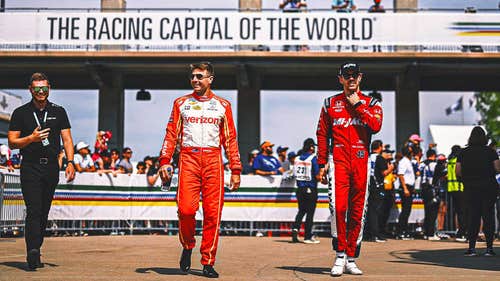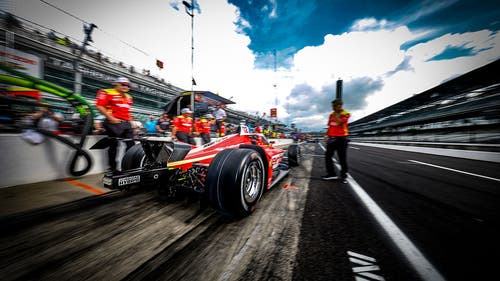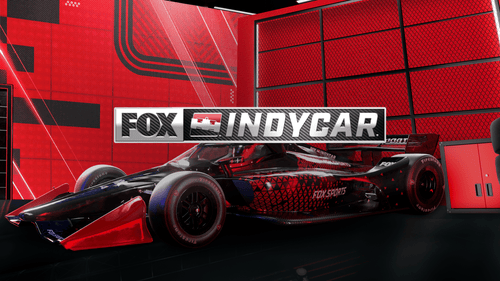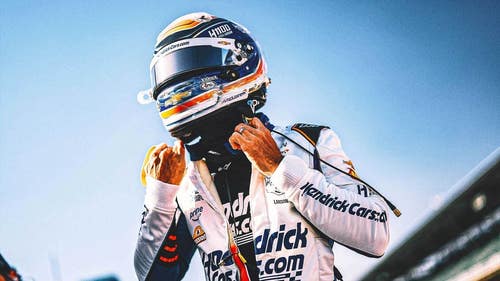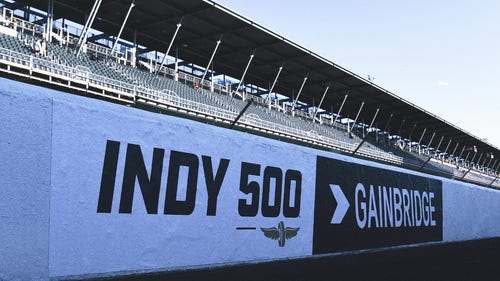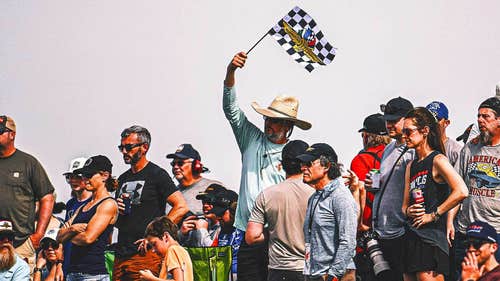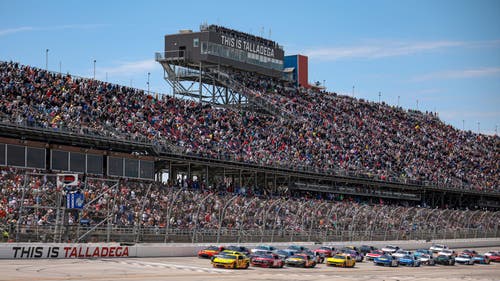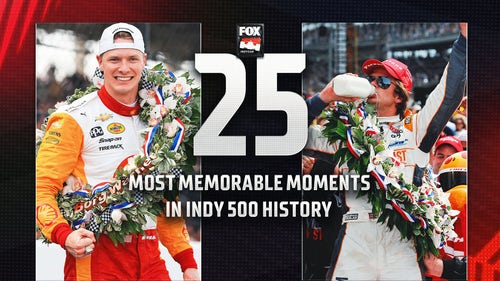Rash of Crash: Inside a wild weekend of wrecks during Indy 500 prep

Bruce Martin
Special to FOXSports.com
INDIANAPOLIS — The past three days of on-track activity ahead of the 109th Indianapolis 500 included a “Rash of Crash.”
When Scott McLaughlin’s No. 3 Pennzoil Chevrolet slammed into the Turn 2 wall and went airborne in Sunday afternoon’s practice session, it was the fourth serious crash of the weekend at the Indianapolis Motor Speedway.
McLaughlin’s Team Penske crew prepared Josef Newgarden’s backup car but decided to pull out of the Fast 12 qualification session to get it ready for Monday’s full-field practice session for the 109th Indianapolis 500.

It highlights the risk versus reward of racing high-speed Indy cars around the 2.5-mile Indianapolis Motor Speedway.
Since the first Indianapolis 500 in 1911 to this weekend’s qualifications, danger lurks just around every corner for every driver that hits that track.
But these are athletes that look danger in the face and don’t flinch.
That is why 350,000 fans will fill the sold-out grandstands on Sunday for this year’s Indianapolis 500 in the ultimate battle of man versus machine.
The famed auto racing journalist and publisher Chris Economaki used to say tracks promoted racing drivers as “death defying daredevils” in the 1930s through the 1960s.
Of course, in modern times, that can’t be used for liability reasons, but part of the allure of the Indy 500 is these are athletes who risk it all to compete in the “World’s Biggest Race.”
The fact each driver involved in every crash walked away uninjured and were back on track to try it again is a major testament to the safety of the current Indy car.
The “Rash of Crash” began on Fast Friday.
Chip Ganassi Racing driver Kyffin Simpson crashed in Turn 4 during a qualification simulation. His No. 8 Honda backed into wall and briefly lifted off the ground, tipped on the left side, did a quarter roll on its wheels and skidded down the front straight before coming to a stop at the entrance of pit road.
Simpson returned to action in a backup car for Saturday morning’s practice session.
Also on Friday, Kyle Larson crashed his No. 17 Arrow McLaren Chevrolet, but it was mundane by comparison, a three-quarter spin before making front-end contact in Turn 3.
Larson returned to the track later that day.
But the crashes were more serious beginning on Saturday.
Marcus Armstrong, who had been one of the fastest drivers in Indy 500 practice for Meyer Shank Racing, got loose and made hard rear and left side contact with the Turn 1 SAFER Barrier. The car slid down the track and had secondary left-side contact in Turn 2. His No. 66 Honda did not tip or go airborne.
Colton Herta, however, had a vicious and thunderous crash in Turn 1 on his qualification attempt on Saturday.
The No. 26 Gainbridge Honda did a half-spin before pile-driving into the SAFER Barrier. The car overturned and slid along the track upside-down, making secondary impact with the Turn 2 SAFER Barrier.
The aeroscreen played a major role in protecting Herta from potential serious.
Herta walked away and returned to the track and qualified 29th for the 33-car starting lineup.
That was the prelude to McLaughlin’s major crash during Sunday’s Fast 12 practice, ruining the chances of the fastest car at the Speedway to make a qualification attempt.
At the time of his crash, McLaughlin had just completed the fastest lap of the practice session at 233.553 mph in the No. 3 Pennzoil Chevrolet.
McLaughlin’s car hammered the Turn 2 wall, launching the car into the air before it slammed heavily into the asphalt on its left side. The impact left a deep gash in the asphalt of the race, which had to repaired by track safety workers.
McLaughlin’s car bounced onto its wheels and slid to rest at the exit of the corner.
McLaughlin was uninjured, but distraught that he crashed what could have easily been the pole-winning car for the second straight year at the Indy 500.
“I’m just really, really, really, really sorry for everybody at Team Penske and the guys on the (No.) 3 car, and everybody on the 2 (Josef Newgarden), 12 (Will Power) and everyone who builds these cars,” McLaughlin said after he was released from the IU Health Medical Center. “It (the car) was talking to me, and I sort of felt it and I should have backed out.
“But you know you are trying to complete a run to see what it feels like and was it worth the risk. It probably wasn’t. I’m incredibly sad. … You just try and brace yourself and hope you don’t go in the catch fence. I’m very grateful to INDYCAR for the safety. My team and the SAFER Barriers kept me safe.”
McLaughlin returns to action for Monday’s full-field practice session and by opting to sit out the Fast 12 qualification session, will start 12th in Sunday’smain event.
Ironically, he will be joined by his two Team Penske teammates, Newgarden and McLaughlin, as INDYCAR officials pulled both cars out of line for working on the car in the qualifying line after it had been in technical inspection.
Both teams had made repairs and/or modifications to the attenuator on the rear of the car.
That aside, McLaughlin’s focus is preparing a car capable of winning the race on Sunday.
“You just have to get on with it,” McLaughlin said. “If they can build a car for me fantastic. I have the best crew on pit lane. I’m really gutted for them. I just destroyed it.
“It’s hard to take, especially now. You kind of wish it was for something, but it was for nothing in practice. But ultimately, those are the decisions that you make at that speed, and I chose to keep the run going. That’s on me.”
Engineers and personnel have all indicated the hybrid unit changes the balance of pressure on a race car, which means weight shifting from front to rear and diagonally from right rear to left front and left rear to right front.
But they all indicated it is too early to blame that as the reason for the crashes at this year’s Indianapolis 500.
Friday and Saturday’s on-track activity were on windy days, and that can dramatically impact an Indy car’s ability to maintain grip at very high speeds.
The bottom line — these are race cars traveling around a 2.5-mile race course designed in 1909 with 45-degree turns traveling at over 233 miles per hour.
Of course, the crashes are going to be big.
FOX Sports spoke with several IndyCar Series drivers about why the last three days included some spectacular crashes and if the extra weight provided by the hybrid unit played a role.
“… it proves the cars are really safe, because everyone got out of these horrendous crashes without a scratch,” four-time Indianapolis 500 winner Helio Castroneves said on Sunday. “That’s a plus.
“Of course, being in the car right now and living it, you can see the cross-weight is a little different. It’s not so much the weight of the hybrid, but the floor of the car. I remember last year, it was crazy in that situation and now with the added weight …
“But as far as cars flipping over, I’ve had that situation in the past. We are traveling over 230 miles an hour, but everyone is coming out safe and that is the important part.
Scott Dixon is a six-time INDYCAR Series Champion, the 2008 Indianapolis 500 winner and the second winningest driver in IndyCar history with 58 career victories.
At 44, Dixon is the “Village Elder” of INDYCAR. He is the wise sage of the series and has seen plenty in his career, both good and bad.
What has made Dixon so great is his ability to adapt and survive the danger in a risky business.
“Conditions have been tough, especially Saturday with the wind,” Dixon told FOX SPorts. “The hybrid doesn’t make it any easier, that’s for sure, but it’s the same for everybody and you have to dial it in.
“Some big crashes, bigger than we have seen in recent years. But I think that happens every year where you have people pushing the limits. We had a couple today and a couple yesterday, it’s just part of it, especially when you go from race trim to qualifying trim, that can be a big shift.
“Luckily, everybody is OK.
“It’s not easy, man. It’s difficult out there.”
That’s why the drivers in the Indianapolis 500 become larger than life heroes, if they can avoid the danger that awaits them around the next turn.
Bruce Martin is a veteran motorsports writer and contributor to FOXSports.com. Follow him on X at @BruceMartin_500.
BEST OF FOX SPORTS’ INDY 500 COVERAGE:
recommended

Get more from NTT INDYCAR SERIES Follow your favorites to get information about games, news and more

